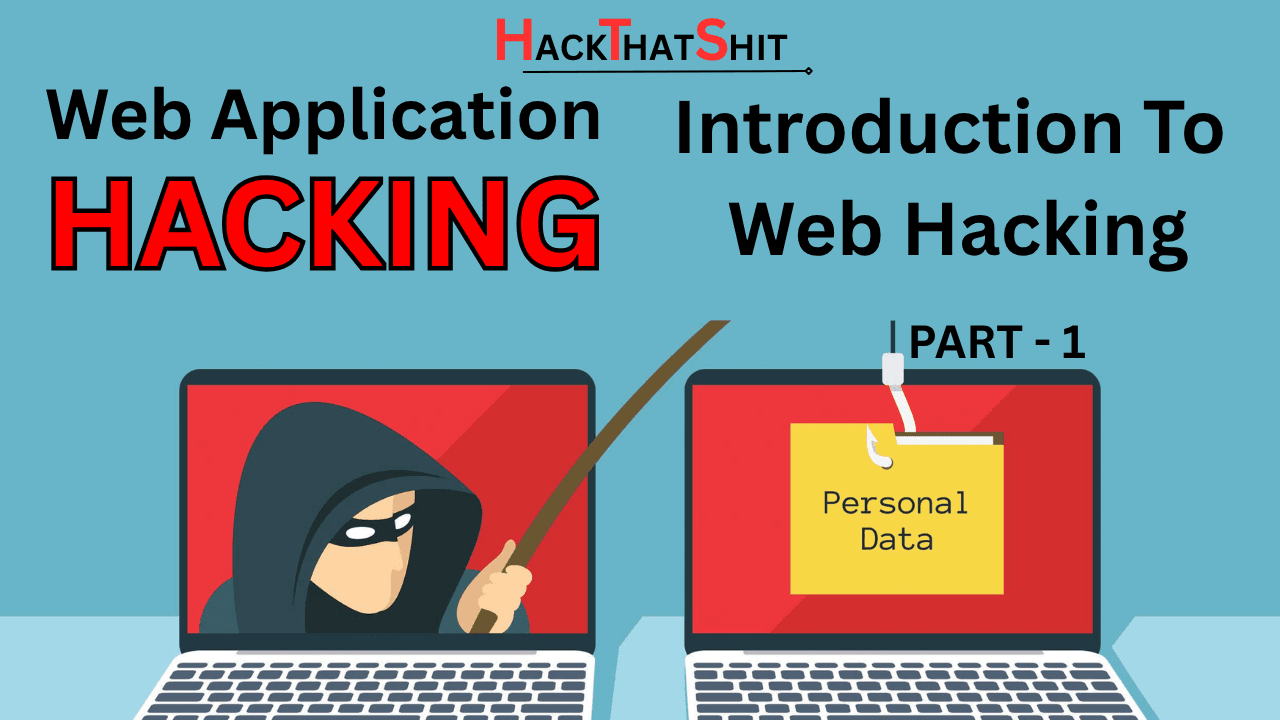Introduction
Welcome to the Web Application Hacking Series on HackThatShit.xyz — your roadmap to mastering the art of ethical hacking against websites, APIs, and online platforms.
In this first part, we’re laying the foundation:
✅ What is web application hacking?
✅ Why is it important?
✅ And most importantly — how do you stay legal and ethical while doing it?
❓ What Is Web Application Hacking?
Web application hacking means finding and exploiting weaknesses in websites or web-based software. These weaknesses could allow attackers to:
Steal personal data
Take over user accounts
Run unauthorized commands
Deface or destroy web content
Examples of such vulnerabilities:
SQL Injection
Cross-Site Scripting (XSS)
File Upload Exploits
Authentication Bypasses
We’ll cover all of these in this series — hands-on, step by step.
🧠 Why Should You Learn Web Hacking?
Web applications are everywhere:
Banking platforms
E-commerce stores
Social media apps
Government portals
With 90%+ of cyberattacks involving web-based vectors, the demand for ethical hackers with web security skills is sky-high.
Whether you want to:
Become a pentester
Join a bug bounty program
Defend your own apps
…this skill is essential.
⚖️ The Legal Side: Hacking vs Ethical Hacking
Let’s be very clear: unauthorized hacking is illegal.
Even if you mean no harm, scanning or exploiting a system without permission can lead to jail time, fines, or worse.
✅ Ethical Hacking Is About:
Permission – Always get explicit consent
Purpose – To identify and fix security flaws
Professionalism – Act with integrity and disclose responsibly
✅ How to Practice Web Hacking Legally
Here’s how to safely learn and test web vulnerabilities:
1. Use Legal Practice Labs
DVWA (Damn Vulnerable Web App)
BWAPP (Buggy Web App)
Juice Shop
HackTheBox
PortSwigger Web Security Academy
2. Join Bug Bounty Platforms
These programs let you hack real-world websites legally and get paid.
🚫 What Not to Do
❌ Never run automated scanners on random websites
❌ Don’t try to “test” your college/school/company apps without approval
❌ Don’t brag or share real exploits publicly without disclosure
Always hack with permission.
🧭 What’s Ahead in This Series?
Here’s a sneak peek of what’s coming:
🛠️ Setting up your own hacking lab
🕵️♂️ Mapping web apps like a pro
💥 Performing SQLi, XSS, CSRF, file upload exploits
🔒 Understanding defense and secure coding
🎓 Learning how to report bugs the professional way
🧑🎓 Final Thoughts
This series is designed to take you from zero to capable in web hacking. Whether you’re a developer, aspiring hacker, or cyber student — you’re in the right place.
Stick to the rules. Stay sharp. Think ethically.
👉 Let’s move on to Part 2: Setting Up Your Web Hacking Lab »
